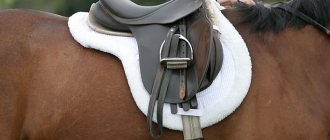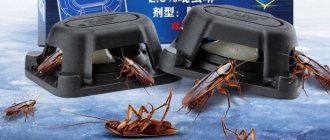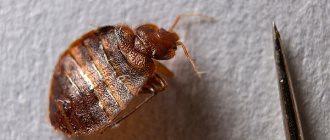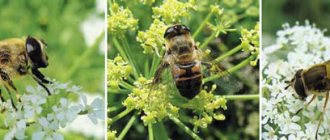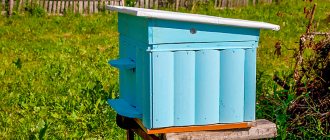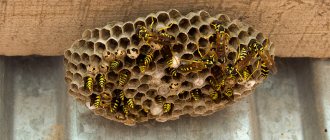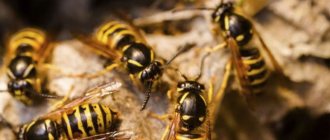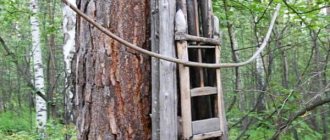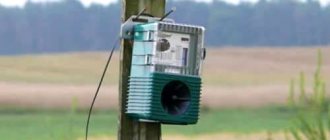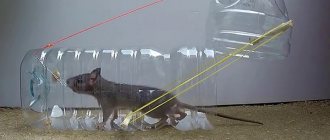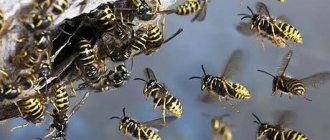11 minutes to read the article
PhotoVideoComments
There are 280 species of pigeons in the world. Birds live on different continents, have different colors and sizes, but they are all united by the need to build nests for procreation. A pigeon breeder must know how to arrange a pigeon nest and all the nuances of nesting of different breeds of pigeons in order to provide the birds with a comfortable existence and the opportunity to bear offspring.
Every pigeon fancier should know about proper nest arrangement
General requirements and recommendations for arranging pigeon nests
Successful breeding of pigeons is impossible without proper arrangement of their nests. To create optimal living conditions for birds, you will have to make efforts.
Every poultry farmer should know the basic requirements for arranging pigeon housing:
- Each individual should have its own spacious place (including a perch) where it can rest and quietly hatch eggs during the breeding season. The bird should not be in cramped conditions, otherwise the breeding of pigeons will be at risk. If the room allows, it is recommended to divide the bird’s home into two parts: in one there are perches, in the other there are racks with nests. Moreover, the racks can be made removable, removed to free up additional space when the chicks grow up, and installed again during the breeding season.
- Comfortable microclimatic conditions. The dovecote should be well ventilated, but without drafts. Pigeons, especially young ones, are extremely sensitive to drafts and high air humidity; they can become seriously ill, and you will have to spend money on medicine for pigeons. The room should be warm, it is advisable to cover the walls with thermal insulation. During the winter months, the pigeon's home must be additionally heated using installed heaters.
- The room must be kept clean: remove droppings and dirt in a timely manner, periodically disinfect racks and perches to prevent the spread of infection.
- The litter in nests must be replaced regularly. Bedding material must be fresh and of high quality; sawdust or straw are used.
- The room needs to be arranged so that it is spacious not only for birds, but also for humans. It should be convenient for the owner to approach the nests and carry out cleaning.
Nesting of wild and urban pigeons
In the wild, pigeons choose nesting sites depending on habitat and breed. It can be:
- crevices in rocky shores - there is less chance of becoming prey for predators;
- hollow of a large tree in the forest;
- mangrove branches;
- low-growing bushes near water;
- abandoned buildings.
City pigeons find a place for a nest that is quiet and inaccessible to humans and animals:
- far corner of the attic;
- external cornices;
- cracks in the walls of old houses;
- sloping roofs.
Types of pigeon nests
There are two types of nests in shape - round and rectangular.
Rectangular structures are made of wood. They are the most popular because they are the easiest to make and the material is always available. The advantage of wooden structures is their durability and the ability to be used for several years. The disadvantage is that the wood rots when exposed to moisture or high air humidity. Therefore, when using wooden nests, you need to ensure that there is always dry and ventilated air in the dovecote. If the microclimate is unsuitable, the nests will soon have to be thrown away.
Round structures are made from different materials, such as plastic, plaster, and foam. Of these, foam plastic products are especially popular. Their great advantage is their ability to accumulate heat, which is important for females sitting on eggs. Experienced poultry farmers note that when choosing nests, pigeons prefer round structures.
When choosing gypsum products, you need to take into account that they can be deformed under the influence of excess moisture. The disadvantage of foam products is their fragility; birds often destroy nesting walls made of light foam material with their beaks.
Can you see baby pigeons?
Like any feathered creature, the dove hatches eggs and builds its nests. But he does this in places hidden from human eyes. For example, in the attic of a house, in a drain, under a balcony, in trees, in various niches. That is, where neither a person nor a predator can notice and reach them. Pigeons, being very caring parents, are simply afraid for their chicks, which is why they settle so separately.
Another reason why it is impossible to see baby pigeons is the late date for leaving the nest and transitioning to independent life. This is why people meet young individuals, but not small chicks.
How to make a pigeon nest with your own hands?
The following are instructions for making pigeon nests from different materials.
Made of wood
Wood is most often used to build nests. The wooden nest is a small rectangular box. You can make a round structure - in this case it is cut out of solid wood or woven from branches in the form of a basket.
To make a wooden nesting place, the following materials and tools are required:
- boards;
- nails;
- hammer;
- saw;
- plywood sheet or fine mesh;
- yardstick;
- sanding paper.
Step-by-step production:
- A board without signs of rotting is taken.
- The surface is smoothed using sanding paper.
- The board is sawn into several pieces of optimal size.
- The cuts are bunched into the sides of the box.
- A plywood or mesh bottom is measured and cut out, and nailed to the box.
- The structure is checked for the absence of protruding nails and protruding chips.
- The box is placed on a rack for birds to explore.
A round nest is cut out in the shape of a bowl from hard non-coniferous species. Before placing the bowl on the rack, it is treated with sanding paper to make it smooth and eliminate splinters. You don't need to sand too hard, otherwise the surface of the wood will become slippery.
Making a nesting basket is a more complex task; for this you need to have weaving skills. Take well-bending willow branches. The wicker nest should not be too deep, otherwise the female will not be able to sit comfortably in order to properly warm the eggs lying at the bottom with her body.
During use, nest boxes may crack. Cracks can become a breeding ground for infection and pests, so they must be puttied.
In the video below you can see the step-by-step process of making nests for pigeons from wood:
From foam plastic
The foam nest is cozy and retains heat. Have to take:
- a piece of foam plastic of a suitable size;
- a saucepan in which foam plastic is placed, suitable for the size of the future nest;
- parchment paper;
- construction bandage;
- glue PVA-M.
Making a nest from polystyrene foam is simple. The pan is placed on the fire. Place parchment paper or newspaper on top of the foam. When the bottom of the pan is hot, you need to slowly but forcefully press the pan onto the material. The foam will melt and take the shape of the container. You can take other available means.
After cooling, the workpiece is removed, coated with glue, and wrapped in a bandage. The bandage shell makes the nest stronger; birds will not be able to destroy it with their beaks.
From plaster
Plaster pigeon nests are also round, the same size as those carved from a single piece of wood. For manufacturing, the following materials and tools are taken:
- gypsum;
- two containers of suitable shape (one smaller than the other);
- polyethylene film;
- knife.
The manufacturing stages are as follows:
- The prepared large container is lined with thick polyethylene.
- The gypsum mass is diluted to the required consistency and poured into a container.
- A smaller container is placed on top, also wrapped in film. To keep it well, you can secure it with a weight placed on top. There should be a distance of at least 3 cm between the larger and smaller dishes.
- The plaster hardens in about 3 hours. After this time, the gypsum mass is removed from the containers.
- Using a knife, bulges and defects are scraped off, creating a smooth surface.
- The product is left in a ventilated place for several days until it dries completely.
From clay
Clay nests look aesthetically pleasing and resemble ceramic bowls. They are created by artisans to order.
There is only one drawback - the fragility of the material. Clay nests crack and break with careless movements. After cleaning the dovecote, owners often take out many shards of shards into trash cans.
Made of plastic
Sold in pet stores. Visually reminiscent of dog food bowls. They have shapes and colors to suit every taste.
The purchased plastic product must be disinfected before being placed in the dovecote.
Optimal sizes of pigeon nests
The size of the nesting site is selected based on the breed of birds. Standard rectangular product: 30 cm long, 25 cm wide, 8 cm high. If the breed is large, then the parameters increase by 5-10 cm. Accordingly, for small breeds the parameters decrease. Nests must be equipped with sides to prevent eggs from rolling out or chicks falling out.
If the nest is round, then its diameter should be at least 25 cm and height – 8 cm.
You cannot save material and make tight structures. In cramped conditions there is a threat to the life of the offspring. The female may inadvertently crush the chicks.
Step-by-step instructions for making your own feeders
Wooden feeders
To create a structure made of wood, you will need the following (the parameters are given as an example):
- plywood;
- boards - 4 pieces (two of them are 70x8 cm in size, the remaining ones are 25x20 cm);
- tin;
- wooden block 70 cm long;
- nails;
- slats.
The process of making a feeder in the form of a house:
- Put together a box from boards using fastening nails. The back and side walls should be high. Be sure to nail the cover from the board.
- Make a roof from 2 pieces of plywood, which should protrude above the structure.
- Separately make a pallet (movable) from plywood and slats. It is installed on the bottom of the feeder.
- Attach a weather vane to the roof to scare away birds (so that they don’t land on top).
- Nail a piece of wood so that between it and the bottom there is space for inserting a pull-out tray.
- Tin is needed to create restrictive strips (cut into strips). They are mounted in front of the feeder in a vertical position. They are fixed between the lid and the bar.
Construction of a dovecote, construction of shelving and perches
The dovecote should provide comfortable accommodation for the birds, and then breeding pigeons will not be difficult. There should be enough space inside the building. Male pigeons can sort things out, fight, and for this they need a place. Birds need to fly freely indoors without their wings touching the walls. Crowded spaces increase the likelihood of pet injuries. The perches should be at some distance from the floor, but not near the ceiling.
The room must be ventilated, which means regular airing. This measure not only eliminates the appearance of mold and infection, but also removes unpleasant odors from the activity of birds. Pigeons are by nature unclean, so poultry farmers have to do a lot of work to maintain cleanliness and order in the bird's home. Care cannot be ignored, because, despite the uncleanliness, pigeons inactively breed in a dirty room saturated with unpleasant odors.
A standard dovecote has the following parameters:
- height – 2 m;
- floor level above the ground – 25 cm;
- doors 150 cm high, 60 cm wide;
- the window area corresponds to a tenth of the floor area;
- holes for birds to fly out 25 cm high, 20 cm wide, 20 cm above the floor;
- ventilation hole at a height of 15 cm from the floor.
Read more about how to build a dovecote with your own hands.
Shelving
The nests are light in weight and can turn over. To place and secure nesting sites, experienced poultry farmers build racks. These structures are in contact with the walls, take up little space and significantly save space.
A good option for a rack is mobile. In this case, wheels from mobile furniture are attached to the legs or bottom panel. It is advisable to make racks that can be easily dismantled if necessary.
Wood is most often used as a material. But the frame can be made of aluminum. The metal is lightweight, but holds the structure firmly.
The instructions for making the rack are as follows:
- You need to take five boards 1 m long, about 35 cm wide.
- Knock down three boards in the shape of the letter “P”.
- Divide the space formed inside the knocked down boards into 3 parts. Attach jumpers at the marked division points. Fix the boards horizontally on the lintels.
- Divide each of the resulting sections into 2 parts. The size of the sections is determined by the breed of pets. The larger the adults, the more spacious the space should be.
- Cover the back side of the rack with a plywood sheet.
- To prevent the sockets from falling out, place a partition on the front side of each section. It should not be too short, but also not high, so that it is convenient for the pigeons to fly inside, and for the owner to clean and disinfect the sections. The optimal height of the partition is 8-10 cm.
Racks are used to accommodate:
- nesting structures;
- boxes where pigeons mate;
- perches (a bar on which the bird sits at night).
Rack with nests
You can whip up a shelving unit from cardboard boxes, but it will not last long.
Perches
Perches must be present in the dovecote, because pigeons spend most of their time on them. Exotic breeds, which have beautiful feather panties on their legs, especially need places to sit. Without a perch, the feathers on the legs will quickly become dirty, which will negatively affect the aesthetic appeal of the ornamental bird.
Perches are made from sanded boards 4 cm thick. They are fixed to the walls. The distance to the ceiling should be 40 cm. If the pigeon family is large, then the perches are fixed in several rows. But they need to be placed so that the droppings of the pigeons sitting on top do not fall on the birds located below. The owner must be able to freely reach the perches for cleaning and disinfection.
The most common designs are in the shape of the letter "L" when viewed from the front. That is, two boards are connected at an angle of 90 degrees, and a batten is nailed on top. It is convenient for decorative pigeons with luxurious plumage to sit on such a perch. For simple breeds, ordinary boards fixed to the walls are suitable. It is advisable that the board be 30 cm long. Two pigeons can sit on it. But in general, the number of perches in the dovecote corresponds to the number of birds: each pet should have its own resting place.
During the winter months, pigeons spend almost all their time on roosts. Therefore, the places should be comfortable for sitting, without forcing the bird to strain and balance. The more comfortable pets spend the winter, the more willingly they reproduce in the spring.
The surface of the perches should be smooth, it is advisable to paint it or treat it with a protective composition that is harmless to birds. Untreated wood quickly deteriorates and becomes infested with insects and fungi. Do not make the surface too smooth or glossy. Bird feet will slide over it. The pigeon will have to make an effort to maintain its balance and not fall.
The board should not be too thick, otherwise the bones on the bird's feet may become deformed due to stress. An optimally suitable perch consists of 3 or 4 sides. The thickness does not exceed 4 cm, this distance is half the length of the open fingers of a pigeon.
There are also no difficulties in making “L”-shaped perches for breeds with lush plumage. Have to take:
- board 15 cm wide;
- plywood sheet;
- saw;
- nails;
- measuring tape.
Manufacturing stages:
- Two cuts 25 and 20 cm long are measured and sawed off.
- Connect at an angle of 90 degrees.
- A triangle is cut out of a plywood sheet to secure the connected boards. Attached to the wall.
- A structure of boards with the top up is installed on top of the plywood.
- A batten is nailed to the joint of the boards to make it more comfortable for the birds to sit.
"L" shaped perches can be found in pet stores. Available in plastic and aluminum. They have a long service life and are easy to clean. But poultry farmers notice that pigeons prefer to sit on wooden structures. Another advantage of DIY wooden perches is that they can be disassembled and repaired.
Creating nesting sites in the dovecote
Pigeons living in captivity cannot choose their nesting site and building material. The pigeon breeder’s task is to create comfortable conditions for the pets to breed their offspring: to find a suitable place in the dovecote, to provide the basis and “finishing” material for building a nest in sufficient quantity for all pairs. One of the necessary skills for a pigeon breeder is creating a nest for pigeons with your own hands.
You don’t need to make the entire nest, just make the base
If the pigeon family does not like the nest, then the birds will not lay eggs this season. Example - Nikolaev individuals are extremely picky.
Don’t get carried away with creating a nest: pigeons are excellent builders and will be happy to arrange a home for the chicks. You need to make a blank form, and put sticks, twigs, twigs, and dry grass on the floor of the dovecote. The pigeon will enthusiastically build a nest, arranging it according to the rules known to it. Making a nest yourself strengthens the reproductive instinct and encourages birds to lay eggs.
Nests are placed on a specially designated, slightly shaded wall at different heights with an interval of 20–30 cm. The number of nests should be equal to the number of mature females + 1-2 extra nests: there will be fewer quarrels between birds over space.
The size of the nest depends on the breed of pigeons, but there is only enough space in it for one adult bird and its offspring. There are 2-3 eggs in a pigeon clutch. Growing up, the children will push the dove out of the “home.”
Pigeons need a nest for 2 months: the female incubates the eggs for 25 days, and then the chicks live under the care of their parents for a month until they learn to fly on their own. During the year, one pair of pigeons lays 3 clutches. At a time when pigeons are not busy breeding offspring, the nests can be removed from the dovecote.
If you scare a pigeon away from its nest, the bird may not return there.
The mating season begins in late March - early April. By this time, nest preparations should already be installed in the dovecote so that the birds have time to get used to their future “apartments” and arrange them to their taste.
Nest care
The materials from which houses and nests are made must be non-toxic and environmentally friendly, otherwise there is a high risk of serious diseases in chicks and adults. Pigeons are sensitive to infection and parasites, so the owner must promptly wash and disinfect nests, perches, and shelving. It is necessary to change the litter as it gets dirty, remove garbage and pet waste.
Disinfection is necessary to prevent the proliferation and removal of pathogenic microorganisms and parasitic insects. For preventive purposes, it is carried out monthly. If the infection has already appeared, then an unscheduled procedure is performed. You need to choose safe disinfectants that do not contain components harmful to birds.
Disinfection is carried out as follows:
- The pigeons are removed from the dovecote for the duration of the procedure.
- Rotten and contaminated litter is completely removed.
- Racks, perches, nests, and walls are carefully treated with a disinfecting solution.
- Wash feeders and drinking bowls thoroughly with cleaning agent.
- A blowtorch can be used as an additional disinfectant.
- At the end of the event, the dovecote is ventilated. Birds are launched into it.
If traces of infection are found during cleaning, then cleaning is carried out with a solution of a special drug that is effective against specific bacterial or viral agents. Every corner of the dovecote and all equipment are processed.
Pet stores sell disinfectant aerosols. They are harmless when processing feed, walls, and bird feathers. They can be safely sprayed into the air.
To clean the dovecote, the poultry farmer must purchase the following equipment:
- scoop;
- broom;
- bucket;
- container for collecting litter;
- scraper;
- rake;
- carriers for pigeons.
A well-constructed nesting site ensures healthy and numerous offspring of pigeons. There is nothing complicated in arranging a dovecote and building nests, but you will have to spend a lot of time and effort. Pigeons readily breed in comfortable conditions, when the environment is clean, spacious and fresh.
0
0
Copy link
Adviсe
It would seem that arranging nesting sites is not at all difficult, but this matter has its own subtleties. Check out the recommendations given by experienced pigeon keepers.
- Be responsible when choosing the size of your future nest. Otherwise, it is possible that the pigeon will crush the chicks while sitting in it.
- It is recommended to divide dovecotes into 2 halves, one of which contains perches, and the other – nests.
- There are different types of frames that can be made for nests. Some are mounted on the wall, others are put on a mount in it. The first option is the most convenient; the main thing is to make very stable shelves so that they cannot tip over. However, if you choose the second option, it will be easier for you to clean and disinfect. In addition, it is easier to remove them for a time when the pigeons are not using them, and free up space in the dovecote.
- To create nests, environmentally friendly materials should be used: wood or plaster. Some people use plastic to create the frame. The environmental friendliness of the materials is important, because if it releases harmful substances, it can scare away pigeons or stop the development of pigeons.
- Consider how you will heat the birds' habitat in cold weather. Typically, heaters are used for these purposes or insulation is placed in nests and perches. If you chose the first option, then ensure the safety of the birds when using it.
- Some bird lovers make dovecotes right on their balcony. Technically, this is not so difficult, you need to install a feeder and a drinking bowl, put together a wooden insulated box with compartments for nests, and the pigeons themselves will bring the necessary twigs and blades of grass for their construction, but the neighbors most likely will not like this option - they will have forever The window sills are dirty, and the constant cooing will cause them discomfort. Pigeon keepers advise limiting yourself to one pair and keeping it exclusively at home. To do this, you can use a spacious cage from which the pigeons will sometimes come out to fly. Give them twigs and blades of grass so that they can make a nest for themselves in the cage, and while the eggs are hatching, move the male to another cage.
- If you get a pair of purebred pigeons, it will be much easier to house their chicks. Owners of dovecotes can take them home, and they may even want to buy especially rare birds. With ordinary yard pigeons, the situation is more complicated, because you may not find anyone willing to take the chicks, and on the street, birds raised among people risk becoming easy prey for any predator. But alone, pigeons in captivity can become sad and even die.
- If little pigeons are alone for at least 10-15 minutes, they begin to freeze and sometimes die. Make sure that the parents do not leave the nest for such a long time. When babies turn 8 days old, they begin to ask for food by squeaking and opening their eyes, after which their possible time spent without parental care increases. At two weeks of age, they move around quite actively, and care must be taken that they do not fall out of the nest.
Pigeons are beautiful and friendly birds that make good pets. Despite their widespread popularity, many people have a soft spot for them and strive to have them in their homes. If you cannot afford to keep a dovecote, then it is best to have one pair of purebred birds. They will delight you with their company and raise their chicks with you.
To learn about the types of nests for pigeons, see the following video.
Breeding pigeons is an interesting hobby, the history of which goes back centuries. Pigeons are famous for their unpretentiousness in food and living conditions. But when it comes to their reproduction, especially rare and unusual breeds, then every poultry farmer is obliged to take care of creating the ideal pigeon house.
